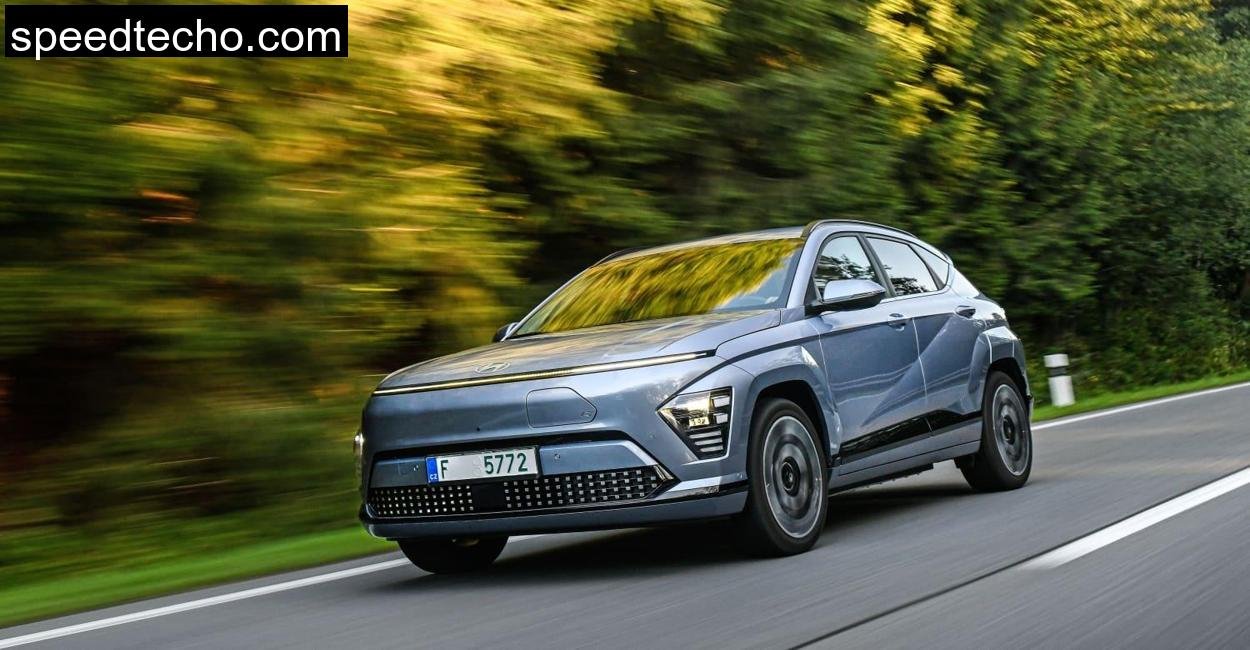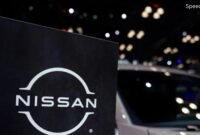Electric, Hybrid, or Petrol: Three Konas, Three Different Souls
From the first turn out of Eisfeld into the flowing B89, each version of the Kona revealed its nature.
The Electric Kona with its 160 kW motor and the 65.4 kWh battery was the most refined. Instant torque made overtaking tractors a breeze, even uphill. The power was delivered so smoothly that it felt like gliding over the road instead of driving on it. In contrast, the Hybrid, with its 141 hp system output, was calm and economical, especially in the tighter village passages where electric creep helped maintain serenity. The 198 hp turbo, petrol, though? That one growled and punched its way through the hills with a mechanical charisma that the other two couldn’t replicate.
Each had its moment. Climbing steep sections toward Heubach, the electric model just surged upward like gravity didn’t matter. But coming back down? Regenerative braking was a revelation. Four levels to play with using the paddles , in the most aggressive mode, I hardly touched the brake pedal.
The Hybrid was a different story. Its 1.6, liter petrol engine, paired with a small electric motor, had to work harder, and on long climbs, it became a bit shouty. Still, it sipped fuel at a frugal rate and always felt relaxed below 80 km/h. The petrol AWD? It was the wild card. If you enjoy spirited driving and don’t mind the fuel bill, it’s a grin, maker. It handled the gravel patches and rutted paths with far more confidence thanks to the on, demand all, wheel drive.
Interior Life: Functional, Futuristic, and Finally Spacious
I’ve driven the previous Kona, and let me be clear: that felt cramped. The new one, however, is another story entirely. At 4.35 meters long, it’s grown significantly. That extra 6 cm in wheelbase translates directly into 8 cm more legroom in the back, and believe me, my 6, foot, tall buddy who tagged along with me for photos thanked me for it.
What impressed me was how consistent the interior layout and space were across all three models. Whether EV, hybrid, or petrol, they all offered the same solid 466 liters of boot space. My gravel bike, with the front wheel popped off, slid in easily. Fold the rear seats and you’re looking at 1,300+ liters. I even stored my charging cable in the EV’s frunk, a neat 27, liter cubby under the hood.
The dashboard layout strikes the perfect balance. Two 12.25, inch screens are now standard above the mid, trim. It looks slick but doesn’t forget the importance of tactile controls, volume knobs, climate dials, proper switchgear. Hyundai didn’t go all Tesla here, and I appreciated that every time I wanted to change drive modes while bouncing over cobbled roads.
That said, the materials used in the cabin weren’t premium, more hard plastic than I’d like, especially on the door cards. But they’re durable and easy to clean after a muddy trail ride, so there’s that.
Real, World Driving: Kona Electric’s Range and the Surprises Along the Way
The most talked, about metric in the EV world is range. Hyundai claims 514 km WLTP for the Kona Electric with 65.4 kWh battery on 17, inch wheels. With the 19, inchers fitted to my test car, that drops to a claimed 454 km. My real, world experience across Lange Berge’s varied terrain? A measured 410 km.
That’s with some highway driving, a lot of elevation change, some time idling with the heated seat and steering wheel on, and frequent regenerative braking. Consumption averaged 18.8 kWh/100 km, which is excellent given the mix of driving conditions.
The hybrid delivered 5.2 liters/100 km across the full loop, including climbs, descents, and even a few bouts of stop, start traffic in Coburg. The petrol AWD? A more eye, watering 7.5 liters/100 km, though the performance it delivered might justify it for some.
Charging the electric Kona was quick but not class, leading. From 10% to 80% took 39 minutes on a 150 kW charger, with an average rate of 85.1 kW. The smaller battery versions charge even slower, so choose wisely if you do long distances.
Tech and Safety: Sometimes Too Smart for Its Own Good
Hyundai’s safety suite is impressive, on paper. Adaptive cruise, lane keep assist, attention monitoring, blind spot warning. But in practice, I found myself arguing with the Kona more than once.
Every time I started the car, the driver assist systems would re, engage. Speed limit alerts? “Ding.” Slightly drift near a white line without signaling? “Dong.” Glance at the screen to mute the previous alert? The camera above the wheel screams, “Pay attention!”
There is no easy “kill switch” for these features. You have to dive into deep menus, and the system resets every time you turn the car off. It got to the point where I dreaded starting the car, not because of the drive, but because of the chorus of alerts that came with it.
These systems should be easy to control. They’re here to help, not patronize.
Performance in the Hills: How Each Kona Felt in Lange Berge
The Lange Berge isn’t the Alps, but the roads are demanding enough to expose a car’s flaws.
The Electric Kona excelled in twisty terrain. Its weight is low, slung, and even on 19s, the ride was composed. It didn’t feel overly firm despite the extra mass, and the steering, while not super communicative, was precise. Sport mode sharpened throttle response, and Eco kept things calm when I just wanted to glide.
The Hybrid was competent but less exciting. Its acceleration is adequate, but if you’re carrying passengers and gear, you’ll notice it struggles more than the other two. However, it handled itself well in evasive maneuvers, safe and predictable.
The AWD petrol version? That was the fun one. It cornered flat, had instant throttle response, and with 198 hp, it surged through open stretches like it was chasing something. The 7, speed dual, clutch transmission handled shifts smoothly. And when I took a gravel shortcut near Rodachgrund, the AWD kicked in seamlessly.
Conclusion: Which Kona Should You Buy?
The new Hyundai Kona has grown into a serious contender in its class, regardless of drivetrain.
The Electric version is the star if you want refinement, silence, and impressive real, world range. If you drive 300+ km frequently and have access to fast chargers, this is the Kona to get.
The Hybrid makes sense for city dwellers or suburban commuters who want high efficiency without worrying about plugs. It’s not thrilling, but it’s polished and eco, friendly.
The petrol AWD is for those who still value mechanical connection, occasional spirited driving, and rural reliability. If you live in the hills, battle snow, or love unpaved shortcuts, this one delivers.
Each Kona brings something unique, and that’s what makes this lineup so compelling. In Lange Berge, through the forest light and winding roads, I saw their differences play out in real time, and honestly, each one impressed in its own way.
Is the electric Kona suitable for road trips?
Absolutely. With real, world range over 400 km and fast charging capabilities, it’s a solid road trip companion, especially with its smart navigation integration.
Does the Kona hybrid feel underpowered?
On paper, yes. In the real world, no. The electric motor makes it feel peppy enough, especially for everyday usage and moderate climbs.
Are the driver assistance systems mandatory in Kona?
No, but they’re aggressive by default and can only be disabled temporarily through the touchscreen menus. A dedicated toggle would improve usability.







really good article